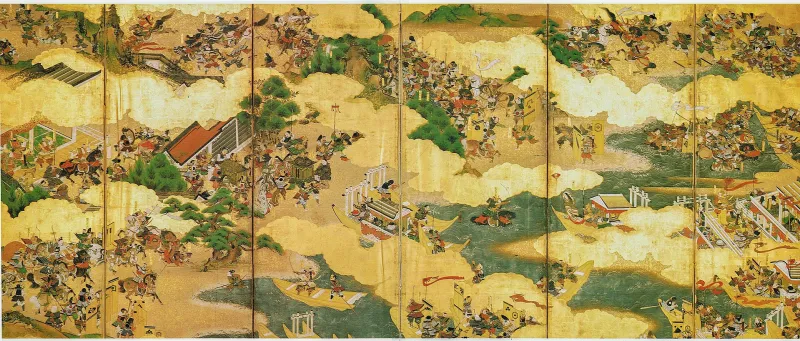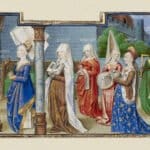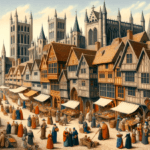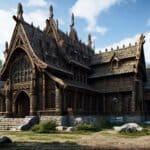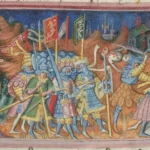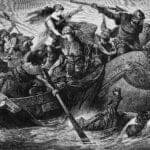The 12th century, spanning the years 1101 to 1200, stands as a pivotal era in European history. Often referred to as the “Renaissance of the 12th Century,” this period witnessed a resurgence of intellectual thought, artistic innovation, and cultural exchange that laid the groundwork for the modern world.
What Year is the 12th Century?
While it might seem counterintuitive at first, the 12th century encompasses the years 1101 to 1200. This era marked a significant departure from the Early Middle Ages, ushering in a period of profound transformation across Europe.
A Multifaceted Transformation:
- Religion as a Unifying Force: The concept of Christendom, a unified religious and political power under the Papacy, gained momentum, influencing everything from art and architecture to warfare and social norms.
- Feudalism’s Impact on Society: Castles, symbolic of feudalism, dotted the landscape as the system of lords and vassals solidified its grip on the social order and land ownership.
- The Rise of Intellectual Centers: Universities emerged as beacons of knowledge, fostering intellectual debate and the study of subjects like philosophy, theology, and law.
Innovation and Creativity:
- Trade Routes and Maritime Power: The Venice Arsenal, a massive and innovative shipyard, propelled Venice to become a maritime superpower. Trade flourished, connecting different parts of Europe and fueling economic growth.
- Artistic and Architectural Achievements: Magnificent cathedrals, such as the Gelati Cathedral, were constructed, showcasing the architectural prowess and artistic sensibilities of the time.
- Technological Advancements: While seemingly simple, the compass and odometer revolutionized navigation and travel, paving the way for exploration and discovery.
The 12th century was far more than just a sequence of dates. It was a crucible of change, where ideas, innovations, and conflicts intertwined to shape the course of Western civilization.
Want to learn more about the era that has witnessed the rise of Gothic architecture and the Magna Carta? Find out more about the 12th century here.
What Defines the 12th Century?
The 12th century was a period of reawakening. Europe emerged from the relative stagnation of the Early Middle Ages, embracing new ideas, pushing the boundaries of knowledge, and forging new connections with the wider world. This era earned its title as the “Renaissance of the 12th Century” due to its parallels with the later Italian Renaissance. It marked a rediscovery of classical knowledge, particularly from ancient Greece and Rome, which had a profound impact on art, philosophy, and science.
Key Hallmarks of the Era:
- Intellectual Revival: Universities became vibrant centers of scholarship and debate. Scholars delved into classical texts, sparking new interpretations and advancements in various fields.
- Artistic and Architectural Flourishing: The 12th century witnessed the rise of Gothic architecture, characterized by its soaring arches, intricate details, and stained-glass windows that filled cathedrals with vibrant light.
- Expanding Horizons: Improved navigation techniques facilitated sea travel and trade, connecting Europe with other parts of the world, including the Islamic world, which was experiencing its own Golden Age. This exchange of goods and ideas enriched European society.
The 12th century wasn’t confined to Europe alone. The Islamic Golden Age, particularly in Spain, witnessed remarkable advancements in mathematics, astronomy, medicine, and the arts, leaving an indelible mark on history and continuing to inspire to this day.
12th Century: A Timeline of Key Events
The 12th century was a dynamic period marked by significant events that shaped the political, religious, and cultural landscape of Europe and beyond.
Religious and Cultural Shifts:
- The Golden Age of the Cistercians: This monastic order emphasized austerity, simplicity, and a return to a stricter interpretation of the Benedictine rule. They founded numerous monasteries that became known for their architectural beauty and played a vital role in the spiritual life of the time.
- The Islamic Golden Age: While Europe experienced its own renaissance, the Islamic world, particularly in Spain, flourished. Scholars like Averroes and Avicenna made groundbreaking contributions to philosophy, medicine, and astronomy, preserving ancient knowledge and influencing Western thought.
Political Upheavals and Alliances:
- The Great Turkish Invasion of Georgia: This invasion posed a significant threat to the Kingdom of Georgia, leading to conflict and displacement.
- England’s Succession Crisis and the Treaty of Alton: The Treaty of Alton in 1101 aimed to resolve a succession crisis in England, highlighting the political complexities and power struggles of the era.
Technological Advancements:
- The Venice Arsenal: Established in 1104, the Venice Arsenal became a marvel of shipbuilding technology, enabling Venice to dominate maritime trade and exert its influence throughout the Mediterranean. This shipyard showcased the innovative spirit of the age.
The 12th century serves as a testament to the interconnectedness of history. From the quiet devotion of monastic orders to the echoes of scientific discoveries in distant lands, the events of this century reverberated throughout the world, laying the foundation for the future.
Major Developments and Their Impact
The 12th century stands out as a period of significant transformation, setting the stage for the later Renaissance and shaping the trajectory of Western civilization.
Key Developments:
- The Crusades and Cultural Exchange: While driven by religious motivations, the Crusades had far-reaching consequences. The flow of people and goods between Europe and the East led to increased trade, cultural exchange, and the introduction of new ideas and technologies.
- The Rise of the Papacy: The Papacy consolidated its power and influence, playing a more prominent role in European politics and shaping religious life.
- The Birth of Universities: Universities, like the University of Paris, emerged as centers of learning and scholarship. They fostered intellectual debate, challenged traditional thinking, and disseminated knowledge, becoming crucial institutions for the advancement of knowledge.
- The Rediscovery of Classical Knowledge: The rediscovery and translation of ancient Greek texts, particularly the works of philosophers like Aristotle, had a profound impact on European thought, influencing philosophy, science, and theology.
Impact and Legacy:
- The 12th century laid the groundwork for the Renaissance: The intellectual curiosity, the rediscovery of classical knowledge, and the flourishing of the arts during this period created fertile ground for the cultural and intellectual explosion of the Renaissance.
- The Crusades had a lasting impact on Europe’s relationship with the East: They fostered trade connections and cultural exchange, but also led to conflict and shaped perceptions of the Islamic world.
- Universities became enduring institutions: They continue to play a vital role in the advancement of knowledge and the dissemination of ideas, highlighting their lasting impact on education and scholarship.
The 12th century, far from being a forgotten period sandwiched between better-known eras, stands as a testament to the dynamism of history and the transformative power of ideas, innovations, and cultural exchange.
- Crypto Quotes’ Red Flags: Avoid Costly Mistakes - June 30, 2025
- Unlock Inspirational Crypto Quotes: Future Predictions - June 30, 2025
- Famous Bitcoin Quotes: A Deep Dive into Crypto’s History - June 30, 2025
